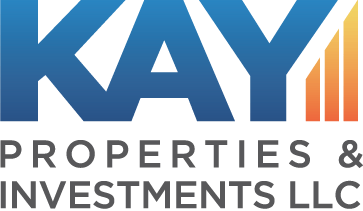By Dwight Kay, Founder and CEO, Kay Properties and Investments
Let’s say you are about to sell your investment property, and your CPA tells you that there is a large tax bill lurking around the corner. In order to avoid paying capital gains and depreciation recapture tax, your CPA advises you to consider exchanging into another property via a 1031 exchange. But what exactly are the best properties for a 1031 exchange and what are some risks associated with some of these 1031 exchange investment options?
Kay Properties and Investments has been helping thousands of investors from across the country navigate 1031 exchange investment options for many years and provides a complete library of resources for 1031 exchange investors to use to help better educate them on real estate investing, Under the IRC Section 1031 exchange, taxes can be deferred from the sale of an investment or business property. The legal and financial particulars of executing a 1031 exchange can be challenging, especially when it comes to finding the next property in which to invest. So we thought it would be a good idea to explore what are potentially some of the best property options for a 1031 exchange.
There are many ways to go about looking for property to exchange into, but something that I recommend to my clients is to start by thinking about the end goal. What are you looking to get out of your next property? For example, many of those who are looking to make a 1031 exchange now likely began with an investment in real estate that they hoped would appreciate. If your goal is to ride a wave of potential appreciation, then there are certain asset classes that have the potential for appreciation, but they also come with significant risk. For example, hotels, student housing complexes, and senior care facilities carry significant risk factors that investors must beware of. If an investor is searching for upside and appreciation potential, one asset class that might be worth looking into is multifamily buildings.
The Positive Aspects of a Multifamily 1031 Exchange
There are several positive aspects to using a multifamily building for a 1031 exchange. For example, multifamily properties are valued based on the amount of Net Operating Income (NOI) they produce. NOI is calculated by subtracting a property’s operating expenses from its gross income. Gross income from a multifamily property can be created from a number of different sources. Obviously, the vast majority of income comes from rent payments, multifamily properties have the potential to generate income from ancillary sources as well, like covered parking fees, laundry/vending income, pet rent income and even rent for storage unit access. Additionally, because most multifamily assets use an annual lease, landlords have the opportunity to potentially increase those leases every year. In addition, any vacancies can provide owners the opportunity to potentially raise rents when filling the vacancy.
The Negative Aspects of a Multifamily 1031 Exchange
On the flip side, operating a multifamily asset can be riddled with expenses, management nightmares, and even regulatory obstacles. Let’s review a few of these:
Maintenance Issues: No residential asset is an inexpensive venture to manage, and multifamily properties can be multiple times more expensive to operate than a single-family rental. Expenses like utilities, taxes, insurance, are always present and have been increasing drastically over the last couple of years, however having to suddenly fix an expensive water heater, roof, or even asphalt driveway can be an unexpected expense that can add up to tens of thousands of dollars. Even legal expenses can quickly cut into the operating income stream of a multifamily asset.
Property Management Challenges: Managing multiple units and tenants can be demanding and time-consuming. Many multifamily owners do not want to enter another multifamily building as part of a 1031 exchange because of the Three T’s of Tenants, Toilets, and Trash. Handling tenant concerns, maintenance, and lease agreements requires a lot of skill and time and providing oversight and asset management to a hired property management firm can be time consuming and incredibly costly.
Regulatory Compliance: Owning a multifamily unit requires landlords to comply with a number of local and state regulations, which can be complex and time-consuming to navigate. One only needs to remember the period of COVID-19 when landlords were unable to collect rent for years to understand how federal, state, and local laws can make it challenging to own a multifamily asset.
The Advantages of a NNN Property for a 1031 Exchange
Many clients that come to Kay Properties for 1031 exchange eligible properties often start with what they think are less management intensive investments like NNN properties.
The triple net lease gets its name from the fact that the property tenant is responsible for paying the three main categories of operating expenses: property taxes, insurance, and common area utilities.
NNN leases are sometimes favored by investors for several reasons, including:
- Leases are generally considered “long-term” (10 years or longer) and often, but not always, have built-in rent escalations, so the hassles of renegotiating leases and securing renewals are less frequent than properties with shorter term leases.
- Property management functions are mostly the responsibility of the tenant, so investors can receive income without the time-consuming aspects of managing a property.
- Some triple net tenants are of high-credit quality, which may offer investors peace of mind in the potential that rent will be paid each month.
The Disadvantages of a NNN Property for a 1031 Exchange
Although these properties tend to be more passive investments, management is still in the hands of the owners. This means that if anything should happen to the building itself, it could be a huge liability to the owner. Also, it can be a very risky proposition to put such a large percentage of an investor’s net worth into a single NNN property. Just think of the famous expression of “never putting all your eggs in one basket”. In addition to these issues, there are several other disadvantages of using a NNN property for a 1031 exchange, including:
- Many expenses, such as accounting fees, insurance and legal costs, remain the investor’s responsibility.
- Investors’ income may be lower than other investments. This is because the tenant is incurring the operating costs of the property, which are factored in when negotiating rent payments.
- Investing in a single-tenant property relies heavily on the quality of that sole tenant, and if that tenant fails, the investor’s income is likely to be reduced or eliminated completely.
- NNN properties can also be hard to locate, perform a review and analysis on, and close on within the time frame of 1031 exchange. Additionally, the price and leverage of available inventory may not meet the needs of an exchanger.
(Video) Challenges of Single Tenant NNN Properties for 1031 Exchanges
Listen to Kay Properties President, Chay Lapin describe in detail challenges of single tenant net-lease properties for 1031 Exchanges. This video goes into great detail on how net-lease properties might be going through challenging times in the near future, and how the ongoing economic complexities might create challenging times for net lease owners
The Delaware Statutory Trust
Another popular strategy is using the Delaware Statutory Trust as a vehicle for a 1031 exchange. DSTs, allow investors to purchase fractional interests of properties without having to make their whole investment count towards one property. Most types of real estate can be owned in a DST, including retail, industrial, self-storage and multifamily properties. A DST can own a single property or multiple properties. In a 1031 exchange scenario, investors can invest proceeds from the prior property sale into one or more DSTs to achieve potential diversification* across asset class, geographic region, and even DST real estate sponsor company.
For example a DST could be a 300-unit multifamily building located in a market, such as Charleston, Raleigh or Savannah; a DST may hold one or more properties occupied by single tenants operating under long-term net leases, such as a FedEx distribution center, an Amazon distribution center, a Walgreens Pharmacy or a Fresenius dialysis center. DSTs can also be one of the easiest 1031 replacement property options to access because the real estate already has been acquired by the DST sponsor company and in turn may typically be closed on by the investor within three to five business days.
The bottom line is that investors have many options to consider before entering into a 1031 exchange, and regardless of the approach you choose, investors should have a long-term investment strategy in place and fully understand the potential risks and rewards of the property type they will be exchanging into.
*Diversification does not guarantee profits or protect against losses.
